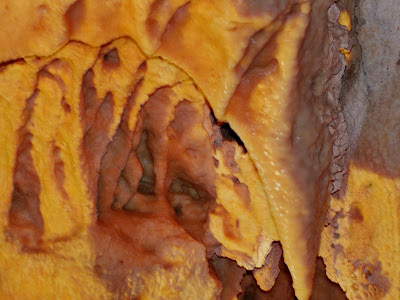I can envision ways folks might use this for the sharing of lab data and also for assessment. The Google Form link above (and right here) takes you to Google's site on using forms in education that I looked at only after writing much of this. Happily, what I've written complements rather than repeats that information.
You could put lab/worksheet/test questions into a Google Form and email it to the class. Then you can easily see how many people responded to a particular item in a particular way. For questions with one correct answer, you could even set up formulas to have the spreadsheet grade it for you. Of course, tests wouldn't be very secure as kids could email the form to their friends, so you'd need to think through how to deal with that issue. The Google site on Apps in Education has insights on some of these issues here.
Update: When I shared this through Facebook, Aida Awad pointed out a resource for grading in Google Forms. Here's what she said:
So much you can do with Google forms in Geoscience classrooms .... check out self-grading forms using Flubaroo at ... http://www.youtube.com/watch?v=XXFRpox7JyM and adding a motion chart to a Google spreadsheet that students used to collect lab data and submit it using a form ... http://www.youtube.com/watch?v=60ugTMZ75vA. You can also import data collected with a form into a Fusion Table and map it!For data sharing and compiling though, it'd be cool. The automated response summary is also very simple to use and quite helpful.
The Summary of Responses option (available from either the top of the page when editing the form or from the Form menu in the spreadsheet view) provides summary charts of responses like the one shown below.
You can also use conditional formatting so you can see certain patterns in a glance within the spreadsheet. What does that look like? The spreadsheet linked here has most numerical values color-code based on a related map keys. The color-coding is done automatically using conditional formatting. To set that up, select a column or set of cells, and select 'conditional formatting' from the 'Format' menu. You can find links to the maps on the page with the form embedded in it. That's here (still in draft form).
You could also use Spreadsheet Mapper to plot mappable data. Note that last time I looked there was a very confusing error in Google's tutorial. It pointed to publishing the spreadsheet in a way that didn't work -- you should share through the option in the File menu, not through the Share button. Spreadsheet Mapper was used to create this map of Virtual Fieldwork Environments.
At the end of the post, I took the spreadsheet I shared back in 2009 of the Geoscientists' to do list and converted it into a form and embedded it in this blog post. The content of that form isn't mine -- it's lifted from Garry Hayes's Geotripper Blog.
When generating a form automatically from a spreadsheet, the default question format is for short text response. That's what is done below. You can also create the form which will automatically generate a spreadsheet.
I changed the first several questions to the different formats of questions available, just to show what they look like. The remaining questions I left in default format.
I didn't include the grid type question in the to do list as it didn't make sense for what's asked. Here is what a grid-type question looks like (along with a few other questions).
I set up the above little form just to see for myself what the grid-type looked like and how it fed the connected form, but I decided to make it something that might be useful for me, so fill it in if you'd like. It should only take a couple of minutes. Completing the form will also allow you to see the summary of responses, available upon form submission.
I've not used the grid before and if I was starting from scratch, I might use it for the whole geoscientists' to do list, with a two or three column grid (yes and no or yes, no, and partially/sort of).




.jpg)








